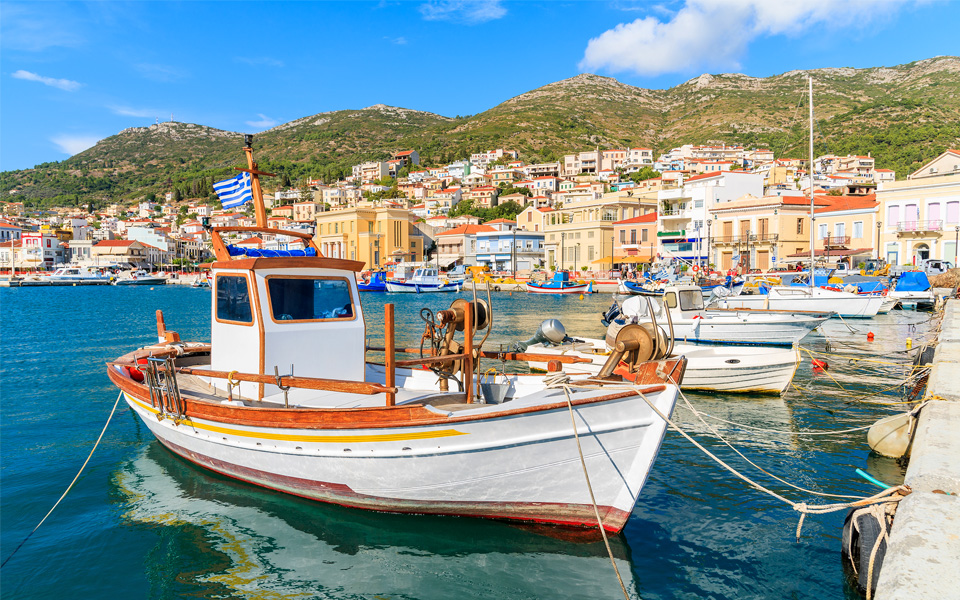1. VATHI
Vathi, the island’s capital, biggest town and main port, may not serve as an ideal esplanade for strolling, but it does boast several worthy neo-classical buildings and mansions. All date back to when Samos was run autonomously under the Ottoman Empire before uniting with Greece after the first Balkan War in 1912. The island’s archaeological museum, located in Vathi, houses a five-meter kouros, statues from the Temple of Hera, as well as a collection of items from the 7th century BC, unique throughout Greece.
A visit to the old town in Ano (Upper) Vathi up the hill is highly recommended. The architecture of the charming houses in the narrow alleys demonstrates influences from Anatolia, Macedonia and the islands. A cultural map provides information on the buildings and the routes visitors can take. The location’s impressive layout provides squares and drinking fountains for rest, while the view from Ai Giannakis church is sensational, especially at sunset.
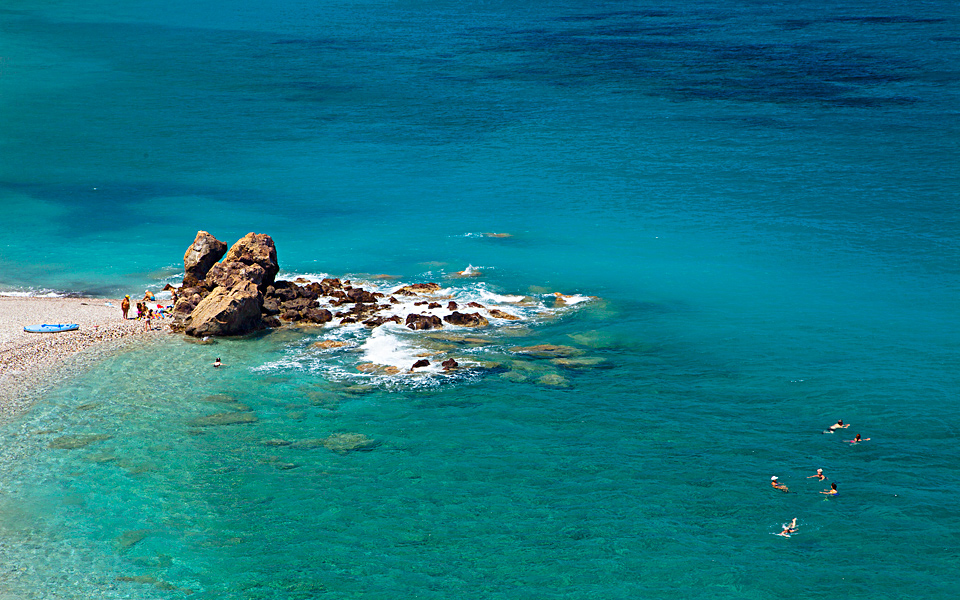
© Olga Harami
2. THE BEACHES
The island’s beaches cater to all tastes. Ranging from cosmopolitan to remote, some are covered with fine sand, others with pebbles. The range includes organized beaches with deck chairs, beach umbrellas and beach bars to remote shelters for sea gulls and Mediterranean monk seals. Samos is blessed with many beaches, all enjoyable without exception and usually covered with vegetation to the edge of the water.
Potokaki and Kokkari are particularly popular among tourists from abroad. Vathi locals usually opt for the beaches in the Nisi area. Some of these spots are located closer to the Asia Minor (Turkish) coastline than to any other part of the island. The historic Mycale Strait, separating Samos from Turkey, is only 1.3 kilometers wide at its narrowest point.
Lemonakia, Tsamadou, Tsabou, and Avlakia are all popular beaches in the northern part of the island, while, in the southwest, the beaches in the Marathokambos area are strong attractions. Potami, in the northwest, ranks as one of the island’s most impressive beaches. If looking for memorable experiences, take the 30-minute hike from Potami over the old cobbled path that leads to the astonishing beach of Seitani. If the yachts choose not to drop anchor there, you could find yourself alone with the seals!
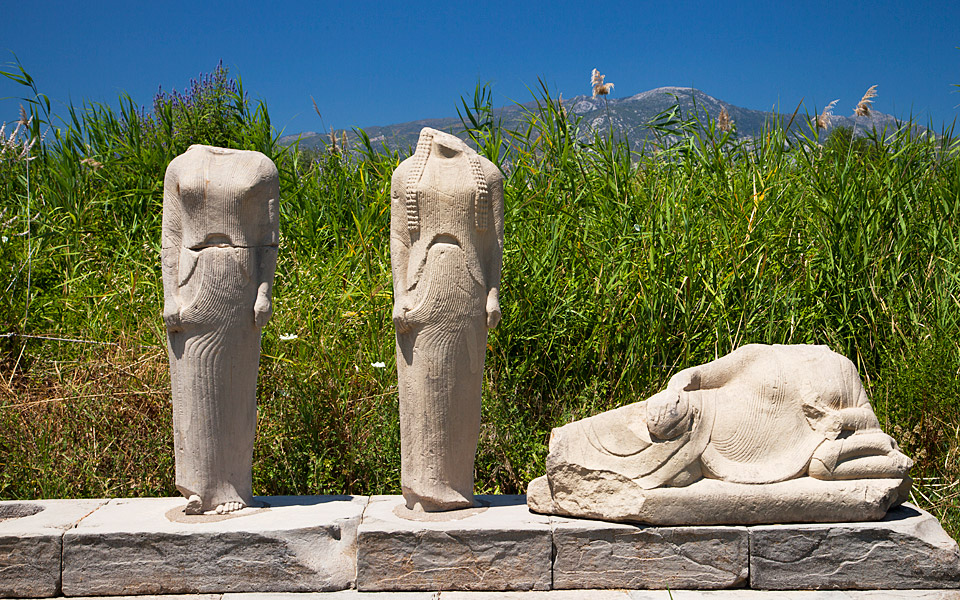
© Olga Harami
3. TEMPLE OF HERA AND THE ARCHAEOLOGICAL MUSEUM
During ancient times, visitors to Samos would travel to the island exclusively for the Temple of Hera, a renowned monument throughout the ancient world. It remains a special spot for visitors today. A UNESCO World Heritage Site, it is located five kilometers from the Pythagorion by the Imvrassos river mouth, where, according to legend, the goddess Hera was born.
Remnants of the temple can be seen at the archaeological site. According to the ancient Greek historian Herodotus, it was the largest temple dedicated to Hera. Its large column, down to half its original size, does not fail to capture the attention of visitors.. It is said the half-sized column was left in place by antiquity thieves of the past as a reference point.
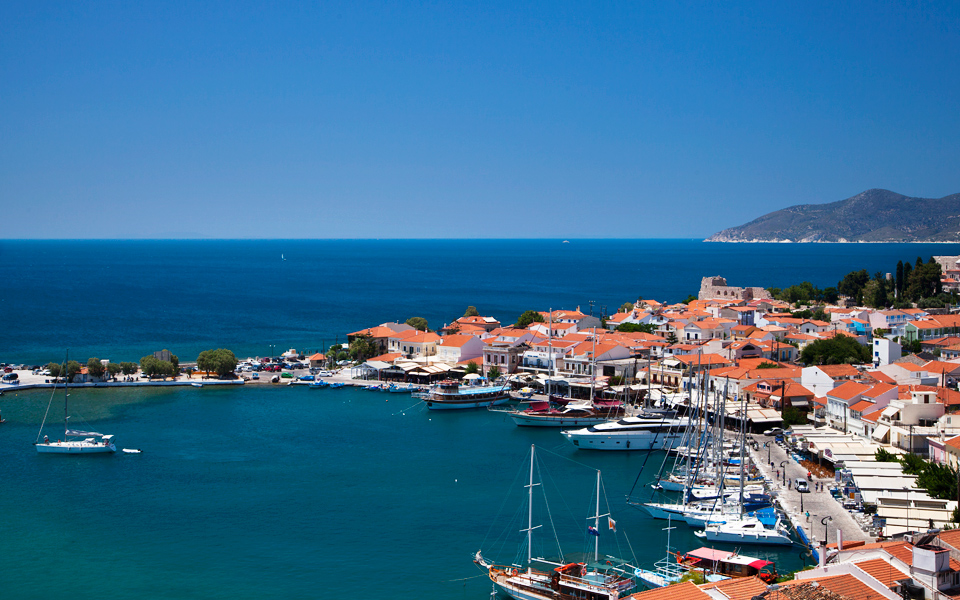
© Olga Harami
4. PYTHAGORION AND THE TUNNEL OF EUPALINOS
Located by the airport, Pythagorion, the island’s most popular destination, has been a cosmopolitan spot throughout its history. The ancient city began flourishing from as far back as the 6th century BC. It possessed a dominant port and renowned fleet that sailed the seas of Europea, Asia and Africa. These days, visitors marvel at the city’s impressive ruins: endless fortification walls, mansions with mosaic floors, parts of the ancient port, and the restored ancient theater.
Visitors are typically most impressed by the celebrated Tunnel of Eupalinos, which measures 1,036 meters in length and served as an aqueduct. It is rated as one of the greatest engineering feats of antiquity. The port town is conducive to pleasant strolls, along the esplanade and its fine shops, and through the uphill alleys with well-kept houses. The archaeological museum, the small castle, and the highly original folklore museum, housed in the Doryssa Bay hotel, are all definitely worth visiting.
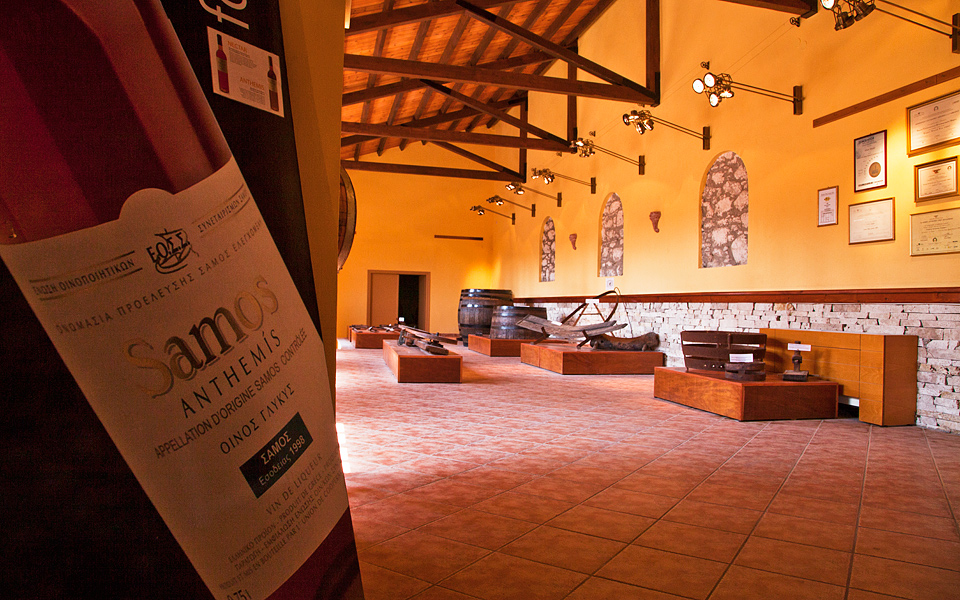
© Olga Harami
5. SAMOS WINE
Thousands of hectares of vineyards, predominantly of the Muscat grape variety, are cultivated on the island’s Mount Ambelos (Vineyard). The wines produced by the UNION OF VINICULTURAL COOPERATIVES OF SAMOS (EOSS) have won international awards and are enjoyed around the world. If interested in trying these wines and learning about their history, visit the Samos Wine Museum in Vathi. The museum highlights the island’s association with wine, dating back to antiquity as documented by the ancient Greek physicians Hippocrates and Galenus.
Officially, it is believed the islanders brought the Muscat variety to Samos in the 16th century. By the 19th century, local wines had conquered markets both east and west t, making their way into the homes of nobles. Also, the Catholic Church commissioned local winemakers to produce wine for communion.
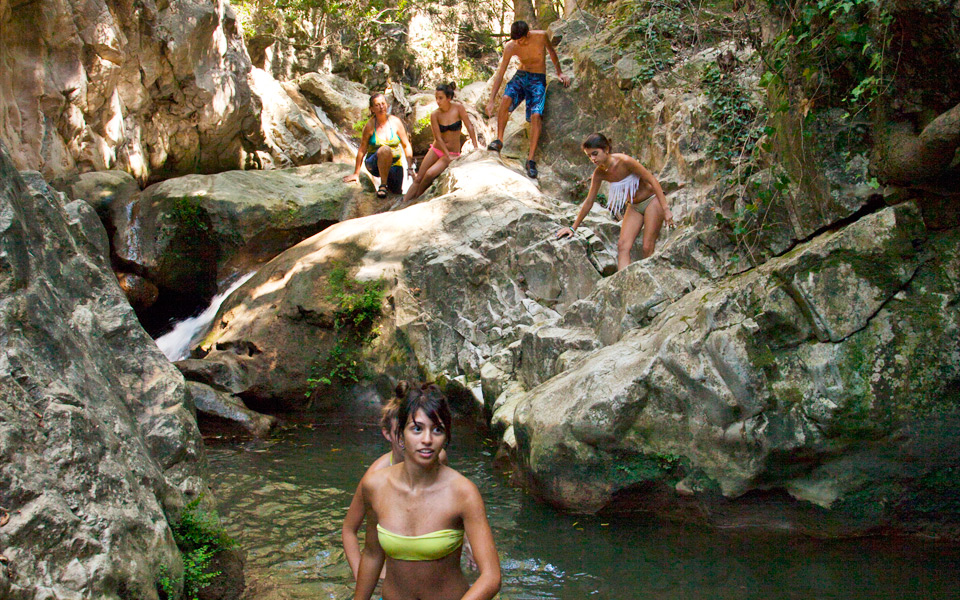
© Olga Harami
6. POTAMI GORGE
Entering the little gorge above Potami beach is the best bet for a good time. A short path first leads to the gorgeous Metamorphosis tou Sotiros Byzantine church. From there a track alongside a densely vegetated creek leads to a small inlet between the stone walls. Do not hesitate to abandon clothes and shoes and plunge into the river waters here.
Overall, this route offers swimming, hiking, and elementary-level rappelling – all the way to a second waterfall 20 minutes away! A small tavern operating directly above the gorge is another perk that comes with a visit to Potami!
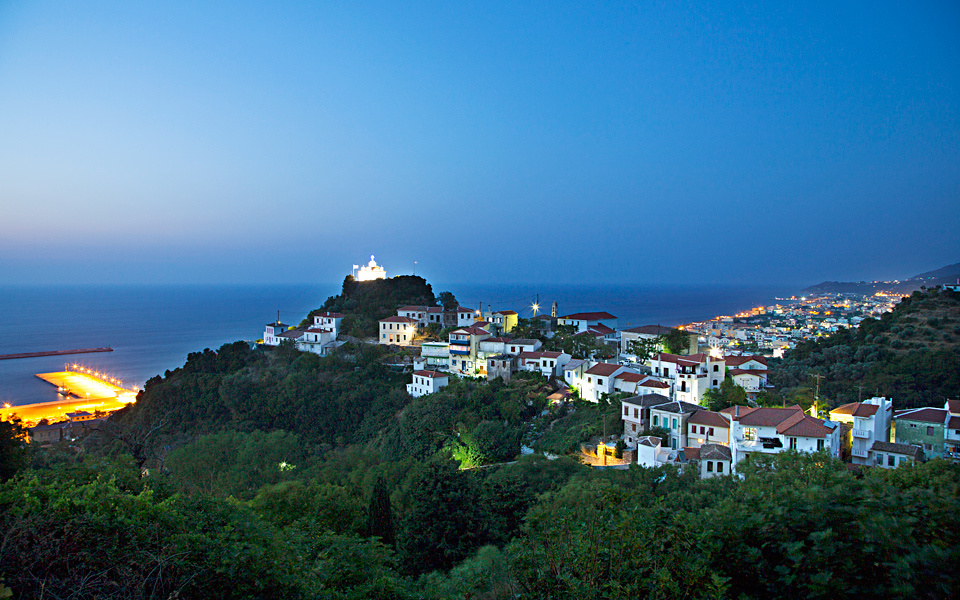
© Olga Harami
7. KARLOVASI AND THE TANNERIES (TABAKIKA)
Famed Karlovasi dominates the western part of Samos, and is also the island’s secondary port. It is divided into five districts, Palio, Neo, Meseo, Limani, and Ormo, and is enlivened by the presence of students enrolled at a branch of the University of the Aegean. Karlovasi owes its multifaceted nature to the delightful little stores lining the tiled exterior paths; Palio (old) Karlovasi, graced with picturesque houses and narrow streets; as well as the town’s spectacular sunsets, as viewed along the coastal front. The celebrated Greek poet Yiannis Ritsos, one of the country’s most prominent literary figures of the 20th century, was said to be fond of gazing out at the sea from here.
The tanneries, locally known as tabakika and located in the Riva district, right in front of the sea, are an intriguing experience. Nowadays in a dilapidated state, they serve as a reminder of the early 20th century, when, along with the island’s tobacco processing facilities, they were pivotal for the local economy. At their peak, some 40 tanneries operated in the area, employing between 300 and 400 workers, to produce 25 percent of Greece’s leather shoe sole output. The impressive old houses, owned by merchants and industrialists of the time in Neo Karlovasi, are also a vivid vestige of the past. Interesting information on the period is presented at the Tannery Museum, locally known as the Mousio Vyrsodepsias.
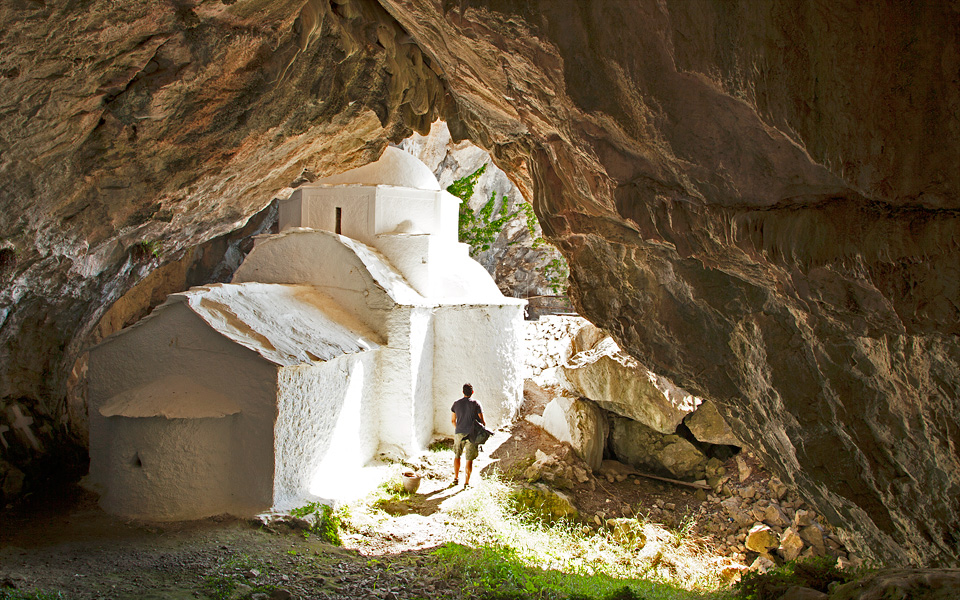
© Olga Harami
8. MOUNT KERKIS AND THE SHIPYARDS
The sight of Mount Kerkis alone, is breathtaking. An imposing mountain in the western part of the island, it is the Aegean Sea’s second largest, after Fengari in Samothrace. The peak at Kerkis, named Vigla, reaches an altitude of 1,443 meters. Visible from a distance and characterized by inhospitable conditions, it was not ascended until the 9th century AD, when ascetics of the period, mountain climbers and predators dared to explore its higher reaches. Caves, chapels, gorges, rivers, and forests feature along the slopes, while the trekking routes are magnificent. A very short route from the bay leads to a cave where ancient philosopher and mathematician Pythagoras, who hailed from Samos, hid while under pursuit by Polycrates, the island’s tyrant.
This brief route also leads to the Panagia Sarantaskaliotissa chapel. If able bodied, its worth considering a venture up to the peak, which can take anything between two-and-a-half and five hours, depending on the chosen starting point. It is definitely worth taking the road from the bay all the way to its end, where the village of Drakei lies – home to two of the island’s remaining traditional shipyards (Another is located in Agios Isidoros). The local shipyard industry flourished around the 18th century, offering crucial support to the island’s economy. Timber from the forests of Kerki was used to build the different types of vessels that populated the seas. If you do make it to the Drakei area, it is also worth heading up to the mountain. A thirty minute walk along the track leads to Panagia Makrini, a charming chapel built inside an impressive cave. This monument has afforded fabulous views of the cliffs since its construction in the 13th century.
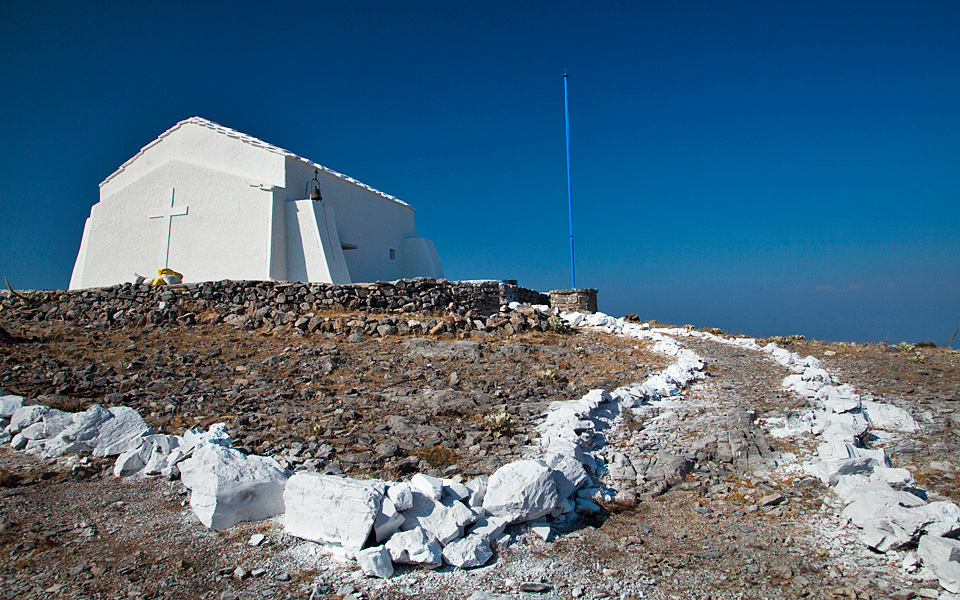
© Olga Harami
9. THE MOST ELEGANT VILLAGES
There are a total of thirty-three inhabited villages on Samos. The most fascinating are Vourliotes and Manolates, located on the lush slopes of Mount Ambelos. Vourliotes is graced by the shadiest of village squares, entirely covered by the foliage of plane trees. The village also offers wonderful walking opportunities through lively alleys lined with beautifully- maintained houses, featuring multi-colored window frames and potted plants.
Visitors to Manolates will be won over by the old tile-covered square surrounded by little taverns, the equally attractive houses and the local artistic workshops, as the village’s ambience has drawn a considerable number of Greek and foreign artists. Both villages offer splendid routes heading up the mountain.
When in Vourliotes, it really is worth driving uphill to the island’s oldest monastery, Moni Vronta. From there, a road leads to the Profitis Ilias chapel perched on the mountaintop at an altitude of 1,150 meters. Imagine the view from there!
10. PYTHAGOREAN CUP
The renowned Pythagorean Cup was designed and produced by Pythagoras in the 6th century BC. It essentially represented an achievement in hydraulic technology that was, later, further developed by Frenchman Blaise Pascal in the 17th century. A line inside the Pythagorean cup, used by ancient Greeks for wine drinking, indicated the drinking limit. If the wine content exceeded this line, then the clay cup would instantly empty through the activation of a smart mechanism.
Pythagoras used this cup as a device to teach students about the virtue of restraint and moderation. It is not the only type of ceramic piece reproduced on Samos. Clay mascara bardaki toys and little whistles, as well as various other clay artifacts, are created through applications of various techniques, often based on the Japanese raku firing method. Clay items may be found in various villages such as Mavratzei, Manolates, and Koumaradei, as Samos has a rich pottery tradition.

